
Remember those really cool cars, uh… or uncool shall we say?
Beauty is in the eye of the beholder, but everyone knows ugly, right? Yes, these were so cool at one time. Looking back at those painful and unbearable memories, we question why we drove them now. How could i own this thing? What was I thinking?
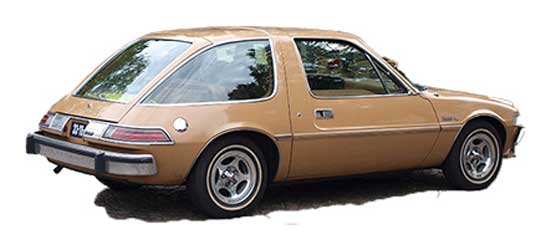
AMC Pacer
The AMC Pacer is a two-door compact automobile produced in the United States by the American Motors Corporation between 1975 and 1980. It was also described as “the seventies” answer to George Jetson’s mode of transportation. It’s unconventional styling, inadequate cargo space and relatively low performance from the six-cylinder engines were cited as factors in the Pacer’s lack of success.

AMC Gremlin
The AMC Gremlin, which made it’s debute in April 1970, and lasted until 1978, as a fast and powerful subcompact car. The Gremlin was described as a “bold and innovative” response to two imminent crises faced by the American automobile industry at the time of its design: reduced gasoline supplies, and an “alarming increase” in the sale of fuel-efficient imports. Due to their inherent inexpensiveness, strength, and the ease with which they could be modified for higher performance, many AMC Gremlins were used in numerous auto racing venues.

LeCar – Renault 5
The Renault 5 was invented by the French. The North American version debuted in 1976 as the Le Car, as part of American Motors Corporation’s partnership with Renault at the time. AMC marketed it through its 1300 dealers where it competed in the United States against such front-wheel-drive subcompacts as the Honda Civic, Toyota Starlet, and Volkswagen Rabbit. It was described as a “French Rabbit” that “is low on style, but high on personality and practicality”. The Renault 5 became the best-selling car in France from 1972 to 1986, with a total production exceeding 5.5 m over a 14-year period, making it France’s most popular car.
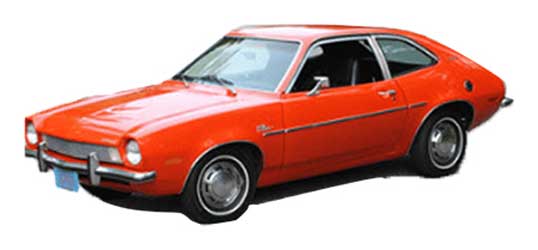
Ford Pinto
The Ford Pinto is a subcompact car produced by the Ford Motor Company for the model years 1971–1980. The car’s name derives from the Pinto horse. Initially offered as a two-door sedan, Ford offered “Runabout” hatchback and wagon models the following year, competing in the U.S. market with the AMC Gremlin and Chevorelet Vega.

Ford LTD Stationwagon
The Ford Country Squire arrived in 1972, and was a full-size station wagon built by the Ford Motor Company from 1951 until 1991, encompassing seven model generations. The Country Squire was based on Ford’s full-size car line and was the premium station wagon in Ford’s model range. The Country Squire was initially built as a “woodie”.
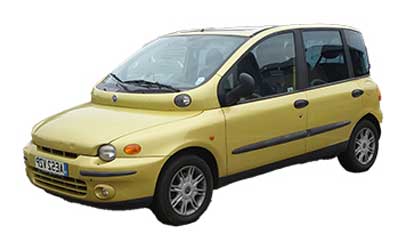
Fiat Multipla
Fiat Multipla is a compact MPV produced by Italian automaker FIAT from 1998 to 2010. Based on the Brava, the Multipla was shorter and wider than its rivals. It had two rows of three seats, where its competitors had two across front seating. The Honda FR-V, which shares the seating layout, was released in 2005. Sales commenced in Italy in November 1998.
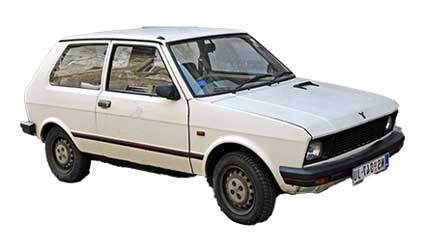
Yugo
The Yugo was a subcompact vehicle built by Zastava Automobiles. In 1985, he began importing the Yugo GV, which turned out to be the Mona Lisa of bad cars. Built in Soviet-bloc Yugoslavia, the Yugo had the distinct feeling of something assembled at gunpoint. Interestingly, in a car where “carpet” was listed as a standard feature, the Yugo had a rear-window defroster — reportedly to keep your hands warm while you pushed it. The engines went ka-blooey, the electrical system — such as it was — would sizzle, and things would just fall off. Yugo.
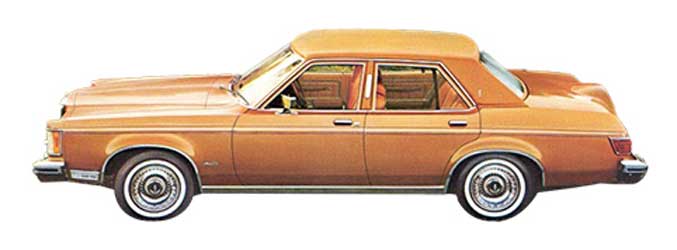
Lincoln Versailles
The Lincoln Versailles is a mid-size luxury car manufactured by Ford Motor Company and marketed by its Lincoln division as a rebadged variant of the Ford Granada and Mercury Monarch.[4] Marketed as a 4-door sedan from 1977 to 1980, the Versailles reached a production total of 50,156 and was noted as the first production vehicle to offer clearcoat paint.
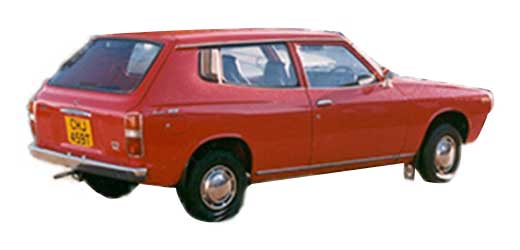
Yugo
The Datsun Cherry, known later as the Nissan Cherry 1970-1977 Originally, before combining with Nissan Motors, the Prince Motor Company plan of development was to mass-produce a front-engine, front-wheel drive car. Subsequent to the Prince and Nissan merger of 1966, the Cherry was released in 1970 as Nissan’s first front-wheel drive car instead. In Asian markets there was also a “Cherry Cab” cabover truck model (C20), which was closely related to the Nissan Sunny — it was also marketed as the “Sunny Cab”. On the UK market, it debuted just before the company’s surge in sales, which saw it sell just over 6,000 cars in 1971 and more than 30,000 the following year. Although its successor was launched in 1974, such was the original model’s popularity on the UK market that it was not replaced there until 1976.
